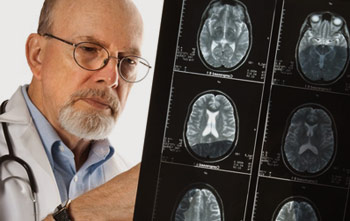Sign in or register for an account.

Advanced Stroke Management
Stroke is the third leading cause of death in the United States and the leading cause of serious, long-term disability. Few conditions can occur as rapidly and with as devastating consequences as stroke. Data from the American Stroke Association (ASA) indicate that over 795,000 people in the United States suffer a stroke each year. Immediate emergency treatment is critical to surviving a stroke with the least amount of damage to the brain and the ability to function. Every stroke or transient ischemic attack must be treated as a life-threatening emergency. Thus, it is important that all healthcare providers be educated on the early identification of stroke symptoms, emergency care options, and prevention of recurrent stroke.
This course will discuss the anatomy and physiology of a stroke, outline the cerebral artery anatomy and identify stroke symptoms as they relate to the various artery involvements. Radiological testing, laboratory values, medications, and nursing interventions will be addressed, as they pertain to the treatment of the acute stroke patient.
Eight hours of annual stroke specific continuing education is required for the staff that comprise the CORE stroke team. Additionally, at least 80% of the Emergency Department staff is required to have knowledge of the stroke pathophysiology, presentation, assessment, diagnosis and treatment including thrombolytic therapy. Finally, Nurses on non-stroke units, where stroke patients are not routinely cared for, and ancillary staff should receive education related to recognition of stroke signs and symptoms and activation of the organization’s emergency response processes.
Questions? Check out our FAQs page and How Online IV Certification Works!
Objectives
Upon completion of this course, the participant will be able to
- Identify signs and symptoms of a stroke, and appropriate emergency treatment.
- Differentiate the difference between a stroke and a transient ischemic attack (T.I.A.).
- Calculate the appropriate dose of t-PA for treatment of ischemic stroke.
- Identify the risks and benefits of t-PA administration.
- List the appropriate members of a (stroke) rehabilitation team.
- Discuss the N.I.H. stroke scale and its use in evaluation of stroke severity.
- Describe measures to decrease the risk of a recurrent stroke (“secondary prevention”).
- Discuss the anatomy and physiology of the brain and cerebral arteries.
- Define the penumbra in relation to acute stroke care.
- Describe the care for the acute stroke patient during a hospital stay.
- Describe emergency interventions for a patient diagnosed with an acute stroke.
Curriculum
Chapter 1: Introduction
- Signs and symptoms of a stroke
- Ischemic vs Hemorrhagic stroke
- Stroke vs Transient Ischemic Attack
Chapter 2: Race Against the Clock
- Time parameters for treatment
- Certified Stroke Centers
Chapter 3: Emergency Department Care
- Initial Emergency Department care of stroke patient
- NPO
- IV sites
- Hypoglycemia
- Blood pressure parameters
- Lab work and related diagnostics
- Aspirin on arrival
- Dysphagia screening
- NIHSS
Chapter 4: t-PA - The Clot Buster
- t-PA for stroke patients
- Inclusion and exclusion criteria
- Infusion and monitoring
- Patient deterioration during infusion
- Expansion of 3 hour window
Chapter 5: Protect the Penumbra
- The Penumbra
Chapter 6: Brain Anatomy
- The anatomy of the brain
- The cerebrum
- The cerebellum
- The brain stem
- Lobes of brain and their function (parietal, frontal, occipital, and temporal)
Chapter 7: Cerebral Arteries
- The cerebral arteries
- Middle cerebral artery
- Anterior cerebral artery
- Posterior cerebral artery
- Vertebral-Basilar artery
Chapter 8: Initial Care
- Initial care of the stroke patient ( 24-48 hours post stroke)
- Glucose levels
- Hypertension
- Body temperature regulation
- Infection
- Deep vein thrombosis
- Constipation
- Members of the interdisciplinary stroke team
Chapter 9: Secondary Stroke Prevention
- Secondary stroke prevention and patient education
Chapter 10: Complications
- Stroke complications specific to area of infarct
- Balint syndrome
- Paramedian thalamic infarction
- Prosopagnosia
- Visual agnosia
- Locked in syndrome
- Migraine versus stroke
Chapter 11: Diagnostics and Treatments
- Diagnostic testing for stroke patient care
- Brain scan (CT scan)
- Magnetic resonance tomography (MRI)
- Transcranial Doppler Ultrasonography (TDU)
- Chest X-ray
- Echocardiogram
- Electrocardiogram (EKG)
- Merci clot disruption
- Craniotomy
- Endarterectomy
- Children and strokes
Chapter 12: Resources and References
- Recommended websites for additional stroke information
- California Bill 241
- Implicit Bias in Healthcare
- What is Implicit Bias?
- Implications of Implicit Bias in Healthcare
- How to Reduce Implicit Bias
Price: $24.00
Contact Hours: 2

Course Author

Maureen Sullivan-Tevault
Maureen graduated nursing school in 1981 and has spent her years in the Emergency and Trauma field, including nursing positions as the Emergency Department Manager, Director of Staff Education, Trauma Coordinator, Cardiology Nurse Navigator, and Stroke Program Manager.
Read Full BioCourse Accreditation
See our Accreditation Statements page to view our accreditation information.